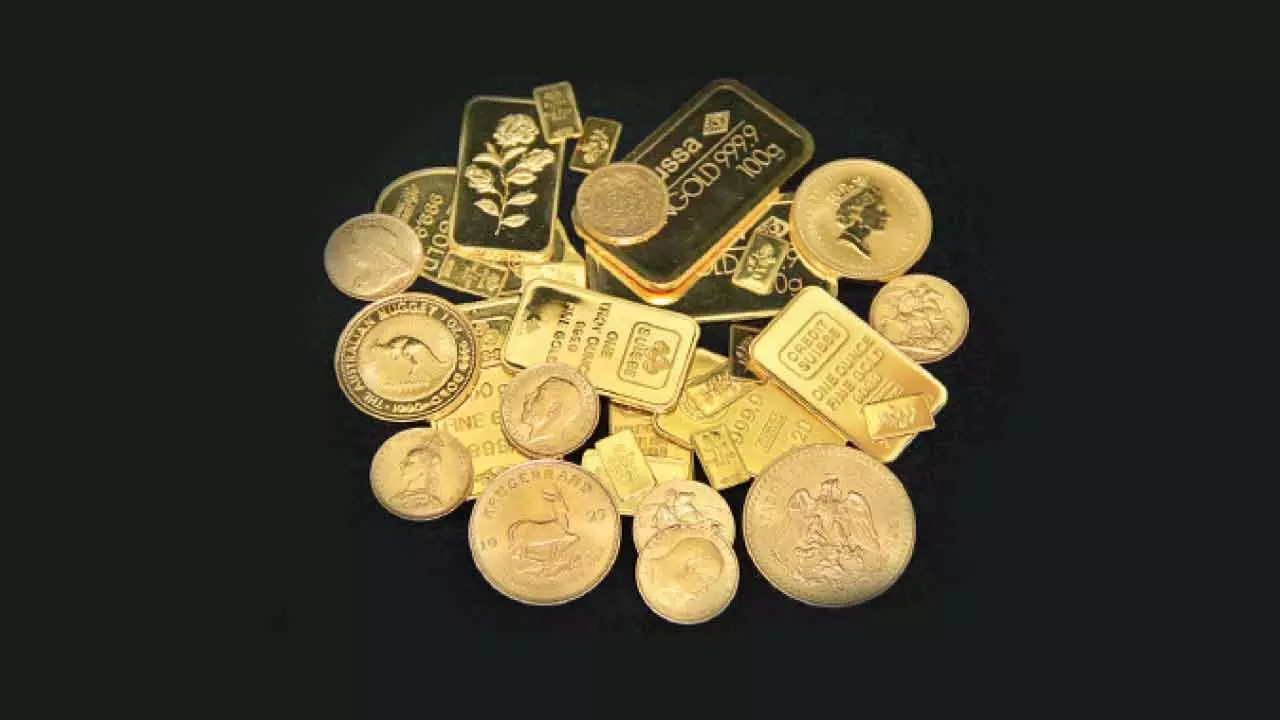Gold gripped in speculative excess bubble
The yellow metal is now in the grip of exactly the sort of speculative excess that creates bubbles in other parts of the financial system
Gold gripped in speculative excess bubble

The danger is that gold is in the grip of exactly the sort of speculative excess that creates bubbles in other parts of the financial system, will it be third time lucky for gold? The yellow metal is having its third breakout in the past 50 years, and the last two times proved an expensive bust. The logic for gold making even more money after its super-soaraway year is simple: This time is different. Those have proved dangerous words for investors in stocks, bonds and currencies.
Gold is meant to be exempt, the ultimate safe asset to protect from the follies of the government and banks. Amid follies aplenty, gold has doubled in the past two years. The danger is that gold is now in the grip of exactly the sort of speculative excess that creates bubbles in other parts of the financial system. Gold also doubled, or more, in two years in 1979-80 and 2010-11. In both periods, investors worried that the Federal Reserve would let inflation erode the value of the dollar.
After the 2008-09 financial crisis, big-name investors and right-leaning economists feared that the Fed’s stimulative bond buying would debase the currency and bring inflation. In both periods, the fears proved misplaced. Gold halved in value in two years at the start of the 1980s as the Fed gave priority to tackling inflation despite a double-dip recession. It took gold more than a quarter of a century to recover to its January 1980 peak, and after adjusting for inflation only regained its peak earlier this year. So much for gold having long-run stable value. From the 2011 high, gold’s price fell for five years, and while it regained that level in 2020, it was lower as recently as two years ago.
There are good reasons to think this time could be different. But there are also worrying signs of speculation. The basic case for gold is that the world needs an alternative to the dollar. The shift into gold started with the freezing of Russian reserves after Russia invaded Ukraine, prompting central banks in developing countries to question how secure claims on Western governments would be in a crisis. Investors joined in this year as they worried about the independence of the Federal Reserve, the scale of government debt and the risk that politicians take the easy route and choose inflation over repayment. Other currencies bring their own political risks, as the French government is demonstrating. All these worries were around in the past two big run-ups, though. Both times the fears proved unfounded. In 1980, Fed Chairman Paul Volcker jacked up interest rates and used double-dip recessions to crush inflation. In the 2010s, it turned out even negative interest rates in much of the world weren’t enough to generate inflation.
We can split the reasons to hold gold into long and short run. The long-term case is the “debasement trade,” the idea that indebted and politically-weak governments will eventually do the opposite of Volcker and choose inflation over recession. Gold provides insurance against interest rates being kept too low in the long run. Concern is that the price of the insurance has gone up so far, so fast: Has the risk really risen that much, that fast? Or are speculators betting that other people think the risk has suddenly risen, and are looking at each other buying to justify buying more?
The short-term case is more questionable. Gold took off in August after Fed Chair Jerome Powell signalled in a speech at Jackson Hole that he was moving from a focus on inflation to a focus on jobs. This “Powell pivot” raised expectations of interest-rate cuts—which is an obvious reason to buy gold if you think the economy’s already running hot, and gold was up 28 per cent since.
Yet, bond markets and the dollar flatly disagree. Rather than pricing in more inflation, bond investors have priced in lower inflation, taking Powell’s side. The dollar is flat, after a brutal selloff earlier in the year. The S&P 500 is up 4 per cent, but it has been led by the Big Tech bet on artificial intelligence, and almost as many stocks are down as up—again, not a sign of investors trying to protect themselves against inflation.
What has done well since the Powell pivot are speculative stocks. My guess is gold is caught up in the broader speculative fervour, with recent buyers more attracted by the rising price than the fear of inflation. Speculation can always go further before a bubble forms and pops.
Gold has already jumped from 4 per cent of global investment assets to 6 per cent in two years, the highest share since 1986. In the extreme case of 1980, a bubble on top of runaway inflation, gold peaked at 22 per cent of investments. My core assumption is still that voters and politicians will find they hate inflation even more than they hate tax rises or spending cuts. But if this time really is different, the dollar is doomed and gold could become a very big part of portfolios again.

